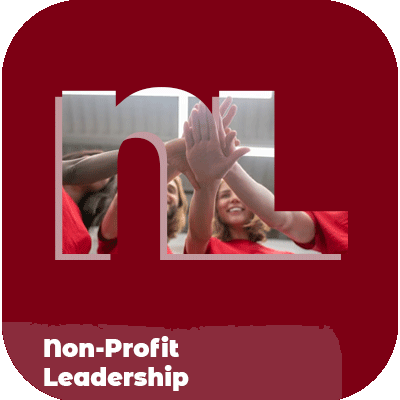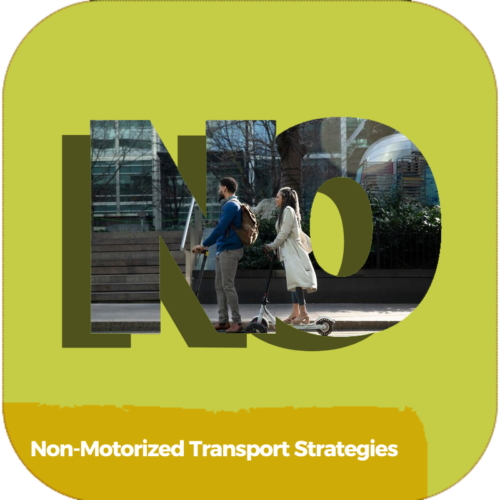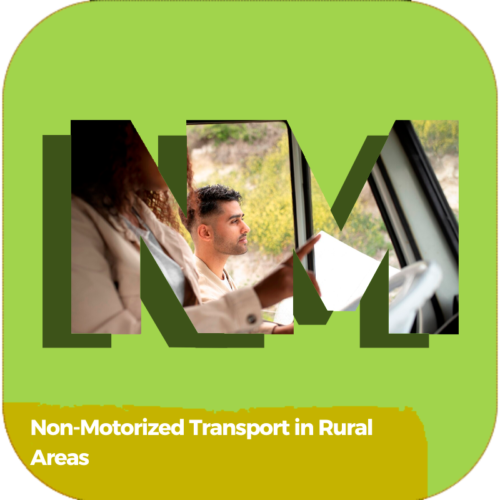- Develop a greater mastery of personal leadership skills and increase confidence in applying leadership skills effectively in the nonprofit workplace.
- Understand personal motivational drivers, emotional intelligence, and communication methods.
- Apply or adapt personal leadership style to meet specific challenges.
- Navigate the challenges of transitioning from an individual contributor to a leader.
- Create a personal leadership plan to refine skills.
- Use results from the inventory to understand personal learning and leadership style.
- Engage in interactive activities of leadership trait development.
-
 Course Description: This online course prepares nonprofit leaders and aspiring leaders to focus on the mission and achieve leadership mastery while driving organizational strategy. This course will explore what leadership means, and strategies to improve leadership traits. Learning Objective: Through this innovative curriculum, participants will:
Course Description: This online course prepares nonprofit leaders and aspiring leaders to focus on the mission and achieve leadership mastery while driving organizational strategy. This course will explore what leadership means, and strategies to improve leadership traits. Learning Objective: Through this innovative curriculum, participants will: -
 Course Description: This online course will give participants the tools and understanding to build a fundraising strategy to achieve long-term sustainable for their organization, by linking organizational objectives fundraising targets, activities, and methods. Participants will develop an action plan to put their fundraising strategies into practice. Learning Objectives: Students in the Fundraising course will:
Course Description: This online course will give participants the tools and understanding to build a fundraising strategy to achieve long-term sustainable for their organization, by linking organizational objectives fundraising targets, activities, and methods. Participants will develop an action plan to put their fundraising strategies into practice. Learning Objectives: Students in the Fundraising course will:- Identify the purpose and key elements of fundraising strategies and how they fit with other organizational objective, strategies, and plans.
- Learn to use strategic planning tools to construct a fundraising strategy, taking into account both organizational factors and the external environment.
- Appraise fundraising options and opportunities to determine which methodologies will be a best fit for the organization; both short-term and long-term.
- Recognize the pros and cons of the available fundraising options.
- Understand the importance of preparing an annual fundraising plan for each fundraising area, goal, activity, timescale, performance indicator, and resource requirements.
-
 Course Description: This course focuses on non-motorized transport strategies, covering the planning, design, and promotion of walking and cycling as sustainable modes of urban transportation. Students will learn about the benefits, challenges, and best practices for encouraging non-motorized transport. Course Objectives:
Course Description: This course focuses on non-motorized transport strategies, covering the planning, design, and promotion of walking and cycling as sustainable modes of urban transportation. Students will learn about the benefits, challenges, and best practices for encouraging non-motorized transport. Course Objectives:- Understand the principles of non-motorized transport.
- Learn about planning and designing for walking and cycling.
- Explore strategies for promoting non-motorized transport.
- Develop skills for implementing non-motorized transport systems.
- Plan and design infrastructure for walking and cycling.
- Promote non-motorized transport in urban areas.
- Utilize best practices for non-motorized transport systems.
- Enhance urban mobility through non-motorized transport.
-
 Course Description: This course focuses on the planning and promotion of non-motorized transport modes, including walking and cycling. Students will learn about the benefits of non-motorized transport, infrastructure design, and strategies to encourage its use. Course Objectives:
Course Description: This course focuses on the planning and promotion of non-motorized transport modes, including walking and cycling. Students will learn about the benefits of non-motorized transport, infrastructure design, and strategies to encourage its use. Course Objectives:- Understand the principles of non-motorized transport planning.
- Learn about the benefits of walking and cycling in urban areas.
- Develop infrastructure plans for non-motorized transport.
- Implement strategies to promote walking and cycling.
- Evaluate the impact of non-motorized transport on urban mobility.
- Develop and implement infrastructure plans for non-motorized transport.
- Promote the benefits of walking and cycling in urban areas.
- Design safe and accessible infrastructure for non-motorized transport.
- Assess the impact of non-motorized transport on urban mobility.
- Increase the use of walking and cycling through targeted strategies.
-
 Course Description: This course focuses on the planning and promotion of non-motorized transport modes, including walking and cycling. Students will learn about the benefits of non-motorized transport, infrastructure design, and strategies to encourage its use. Course Objectives:
Course Description: This course focuses on the planning and promotion of non-motorized transport modes, including walking and cycling. Students will learn about the benefits of non-motorized transport, infrastructure design, and strategies to encourage its use. Course Objectives:- Understand the principles of non-motorized transport planning.
- Learn about the benefits of walking and cycling in urban areas.
- Develop infrastructure plans for non-motorized transport.
- Implement strategies to promote walking and cycling.
- Evaluate the impact of non-motorized transport on urban mobility.
- Develop and implement infrastructure plans for non-motorized transport.
- Promote the benefits of walking and cycling in urban areas.
- Design safe and accessible infrastructure for non-motorized transport.
- Assess the impact of non-motorized transport on urban mobility.
- Increase the use of walking and cycling through targeted strategies.
-
 Course Description: This course focuses on the development and promotion of non-motorized transport options in rural areas, such as walking and cycling. Students will learn about the benefits, challenges, and best practices for implementing non-motorized transport solutions in rural communities. Course Objectives:
Course Description: This course focuses on the development and promotion of non-motorized transport options in rural areas, such as walking and cycling. Students will learn about the benefits, challenges, and best practices for implementing non-motorized transport solutions in rural communities. Course Objectives:- Understand the principles of non-motorized transport in rural areas.
- Learn about the benefits of walking and cycling.
- Explore strategies for promoting non-motorized transport.
- Develop skills for implementing non-motorized transport solutions.
- Promote walking and cycling in rural communities.
- Implement infrastructure for non-motorized transport.
- Address the challenges of non-motorized transport in rural areas.
- Enhance rural mobility through eco-friendly transport options.
-
 Course Description: This course focuses on controlling noise and vibration in railway operations, including the sources of noise and vibration, measurement techniques, and mitigation strategies. Course Objectives:
Course Description: This course focuses on controlling noise and vibration in railway operations, including the sources of noise and vibration, measurement techniques, and mitigation strategies. Course Objectives:- Understand the sources of noise and vibration in railways.
- Learn measurement techniques for noise and vibration.
- Develop strategies to mitigate noise and vibration.
- Implement noise and vibration control measures.
- Evaluate the effectiveness of control measures.
- Identify and analyze sources of noise and vibration.
- Measure noise and vibration levels accurately.
- Develop and implement mitigation strategies.
- Ensure compliance with noise and vibration regulations.
- Improve the environmental performance of railway operations.
-
 Course Description: This course explores cutting-edge innovations in ticketing systems, contactless payments, and passenger experience technologies to improve customer satisfaction and operational efficiency. Objectives:
Course Description: This course explores cutting-edge innovations in ticketing systems, contactless payments, and passenger experience technologies to improve customer satisfaction and operational efficiency. Objectives:-
- Understand next-gen ticketing technologies and fare management systems.
- Implement AI-powered customer service solutions in railways.
- Optimize station layouts for passenger flow efficiency.
- Develop real-time mobile and cloud-based ticketing solutions.
- Integrate contactless payments with railway infrastructure.
- Enhance accessibility with digital travel assistants and AI chatbots.
- Utilize big data to personalize passenger experiences.
- Improve passenger security through digital verification systems.
- Assess case studies of smart ticketing implementations in rail networks.
- Develop a passenger experience transformation plan for rail operators.
-
-
 Course Description: This course explores modern warehouse automation and smart inventory management techniques, ensuring seamless rail logistics operations. Objectives:
Course Description: This course explores modern warehouse automation and smart inventory management techniques, ensuring seamless rail logistics operations. Objectives:-
- Understand the role of automation in railway warehousing.
- Implement AI-driven inventory management systems.
- Optimize rail yard operations with automated handling equipment.
- Integrate robotics and AI in freight warehousing.
- Reduce manual labor costs through automation solutions.
- Utilize RFID and barcode scanning for accurate tracking.
- Develop predictive analytics for warehouse demand planning.
- Implement smart storage solutions for high-volume freight.
- Assess case studies of automated railway warehouses.
- Design a next-generation warehouse automation framework.
-
-
 Course Description: This course covers advancements in railway signaling and control systems, including digital interlocking, ETCS, and AI-powered automation. Objectives:
Course Description: This course covers advancements in railway signaling and control systems, including digital interlocking, ETCS, and AI-powered automation. Objectives:-
- Understand the evolution of railway signaling technologies.
- Implement European Train Control System (ETCS) standards.
- Optimize rail traffic flow using smart signaling solutions.
- Integrate AI-driven automation in railway control centers.
- Assess the role of 5G connectivity in real-time signal communications.
- Improve fail-safe mechanisms in train control systems.
- Enhance interoperability between cross-border rail networks.
- Evaluate case studies on next-gen railway signaling.
- Implement cybersecurity protections for digital rail control systems.
- Develop a transition plan for next-gen railway signaling.
-
